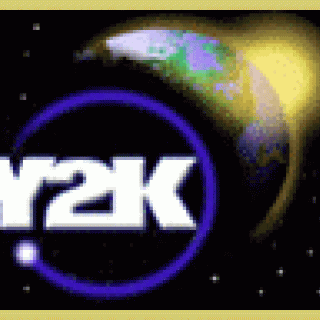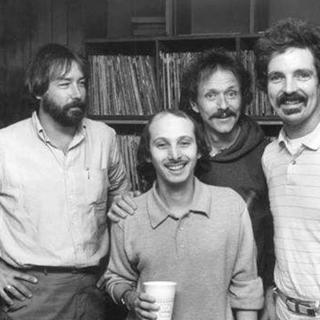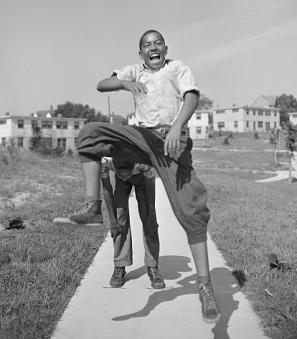Carrying a Torch for the Olympics
84 days, 42 states, 29 state capitols, 11 pairs of “twin cities,” 3 coastlines... The chance to travel on special or historic ‘planes, trains, and automobiles’ through multiple major cities... A guaranteed front-row seat at hundreds of parties, concerts, speeches, dances, and picnics – and an amazing panoramic view of most of the continental United States. It sounds like the ultimate American road trip, doesn’t it? You could say that.
In 1996, the Olympic torch relay was the hit of the summer and, in the lead up to the summer games in Atlanta, cities and towns all over the country rolled out the red carpet. Few, however, could compete with the scene in Washington, where the flame was invited for a White House slumber party on June 20, 1996.
This was, of course, no ordinary ‘sleepover.’ According to a reference in The Washington Post, the Georgia State Patrol officers in the Olympic caravan had to be given permission to have access to the grounds and protect the flame, setting them somewhat at odds with the Secret Service – until the Secret Service discovered that if the southern officers weren't allowed in, they would have to learn how to maintain an international flame, and quickly! A special cauldron was brought to the White House so the flame could have a proper ‘bed.’ Space had to be made for the dozens of journalists and TV crews that wanted to set up shop outside the Executive Mansion. And the usual standbys of late-night snacks and sleeping bags would have to be canned – after all, reporters joked[1], does one tuck the Olympic flame into bed with flame-retardant sheets? Serve it Bananas Foster or Cherries Jubilee (both of which are served en flambé) as a midnight treat?
On the day of the visit, the torch had “miles to go” (to borrow from Robert Frost) before it could ‘sleep.’ Coming from the north, its trip through Maryland was packed with celebrations and historic sites, including festivities outside the State House in Annapolis and around Baltimore’s Inner Harbor. Tens of thousands of people took extended lunch hours (or the whole day off) to line the streets or attend the nearest handoff. Area newspapers published maps of the route; The Washington Post even listed specific time-stops, so readers could choose where they wanted to catch a glimpse. Many elected to gather outside the White House – the flame would be under heavy guard, of course, but situated so that it would be visible to curious onlookers outside the grounds.
After winding its way through the District[2], past the Naval Observatory and Washington National Cathedral, and stopping at both Gallaudet and Howard Universities, the Olympic flame was carried the final leg to the White House by Sister Mary Popit of the Sisters of the Holy Child, and by SPC Martin Begosh, a 23-year-old Army veteran. Begosh, with one leg in a cast and recovering from injuries that required 16 surgeries after his vehicle hit a land mine in Bosnia, carried his torch from his wheelchair, which his father pushed down Pennsylvania Avenue, before they met Sister Mary, who took the flame from Pennsylvania Avenue to East Executive Drive.[3] [4] At the southeast gate of the White House, she passed the flame to Dr. I. King Jordan – former president of Gallaudet University – who carried it onto the South Lawn just before 10 p.m., where President Clinton, Vice President Gore, and their wives waited. Together, Dr. Jordan and the President lit the wide ceremonial cauldron that had been erected to house the flame overnight, and the crowds gathered broke into applause as the flame jumped high enough to see.
One might think that such an extensive trip the day before might warrant sleeping in the next morning, but no such luck: the flame was the honoree at an early speech given by President Clinton during a private ceremony. The President addressed the crowd after D.C. social worker, Lang Brown, bore the torch up to the dais. Brown was chosen as a torchbearer to honor his work teaching independent living skills to troubled teenagers.[5]
Clinton thanked Brown for his work while lauding him and the other torchbearers as shining examples to the nation and the world.
…it is this flame that represents the best of the United States of America. The Olympic spirit is the spirit of personal responsibility and best effort, the spirit of community, the spirit of unity. The people who carried this torch all across America show us exactly how that spirit can lift all our lives every day. […] This has been carried by America’s best. They are everyday Olympians.
After finishing his remarks, President Clinton and Carla McGhee (of the U.S. women’s basketball team) lit the torch McGhee would carry, then she began to run off the White House grounds in her part of the relay – the flame was bound for the Washington Monument and the Jefferson and Lincoln Memorials[6], before heading to a celebration in Alexandria’s Market Square and a sports demonstration by Northern Virginia athletes.[7] It would even stop briefly at Potomac Mills Mall (though it didn’t do any shopping). A ceremony at Mount Vernon included a greeting from “George Washington” after the flame was borne up to the front doors by three Mount Vernon descendants (one of George’s, one of Martha’s, and one of Nancy Quander’s).[8] [9] [10]
While some athletes – like McGhee – carried the torch, most torchbearers were not household names. To be selected –“a distinct honor […] bestowed on very special people who exemplify the ideals and spirit of the Olympic Games”[11] – was to be part of “the most extensive search in the history of the Olympic Games.”[12] Judging panels created by more than 1,300 United Way organizations throughout the United States spent six weeks in late 1995 reading through thousands of application essays that said, in 100 words or fewer, how the person nominated had made a tangible difference in their community. 181 people carried the torch through Maryland[13], while another 85 carried it through the District[14], and an additional 84 took it through Northern Virginia.[15]
They were an impressive group. Just to name a few, there was Kevin McCarthy, a volunteer with the Alzheimer’s Association; Jose Vicente Rojas, who worked for a gang-prevention group; Scott Steele, who won a silver medal in sailing at the 1984 Games; Kimberly Brown, a volunteer with the National Kidney Foundation; Dave Severance, the commander of the men immortalized at the Marine Corps War Memorial; Veronica Morrison, who competed in fencing in 1968 and 1972, and grain farmer Boots Ritchie.[16] Meanwhile, 15-year-old Matthew Smith flew from Fairfax to Cincinnati, carrying the torch in Ohio.[17] Certainly the opportunity to carry the Olympic torch – and make area history – is a once-in-a-lifetime opportunity that no one who participated would forget.
While the torch’s stopover in D.C. was brief, Washingtonians could take heart that the Olympics would come back to the nation’s capital twice more that year: several of the Olympic soccer games would be held at R.F.K. Stadium, and over 500 members of the American Olympics team visited the White House after the end of the Games for the ultimate summer house party.[18]
Footnotes
- ^ “An Old Flame at the White House,” The Washington Post, June 18, 1996.
- ^ Alice Reid, “Flame is a Fleeting Thing: Olympic Torch to Make Whirlwind Tour of Washington,” The Washington Post, June 19, 1996.
- ^ Louis Aguilar, “Bearing the Torch for a Better World,” The Washington Post, June 13, 1996.
- ^ Ian Fisher, “”Land Mine Wounds Soldier, the First U.S. Casualty in Bosnia,” The New York Times, December 31, 1995.
- ^ Paul Duggan, “Blazing an Olympian Trail,” The Washington Post, June 13, 1996.
- ^ Larry Fox, “Weekend’s Best,” The Washington Post, June 21, 1996.
- ^ Michael D. Shear, “Communities Brighten Up for Olympic Torch Relay,” The Washington Post, May 23, 1996.
- ^ Arthur Santana and Cheryl Tan, “Touring Torch Shines on Throngs Gathered Along Virginia Path,” The Washington Post, June 22, 1996.
- ^ According to George Washington’s 1799 listing of all the enslaved people he owned, Nancy Carter lived on River Farm with her mother, who was a field-hand. Carter and her mother were freed by Martha Washington in 1801, according to a stipulation George had made in his will for the release of his personal slaves. Nancy went on to marry Charles Quander, a free black man from Maryland.
- ^ Jessie MacLeod, “Nancy Carter Quander,” George Washington’s Mount Vernon, accessed July 13, 2018, https://www.mountvernon.org/library/digitalhistory/digital-encyclopedia/article/nancy-carter-quander/.
- ^ The Washington Post, “Olympic Spirit Shared Across America by Torchbearers in 1996 Olympic Torch Relay,” accessed July 13, 2018, https://www.washingtonpost.com/wp-srv/sports/olympics/longterm/torches/bearers.htm
- ^ Ibid.
- ^ Ibid.
- ^ Ibid.
- ^ Marylou Tousignant, “Virginia Torchbearers Prepare to Take Historic Steps,” The Washington Post, June 13, 1996.
- ^ Duggan, “Lighting Up.”
- ^ Duggan, "Blazing an Olympian Trail."
- ^ Ann O’Hanlon and Brad Parks, “For Olympians, It’s One Big House Party,” The Washington Post, August 8, 1996.





![Sketch of the mythical fuan by Pearson Scott Foresman. [Source: Wikipedia]](/sites/default/files/styles/crop_320x320/public/2023-10/Goatman_Wikipedia_Faun_2_%28PSF%29.png?h=64a074ff&itok=C9Qh-PE1)












